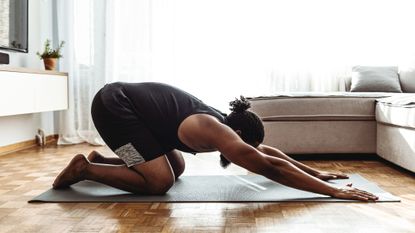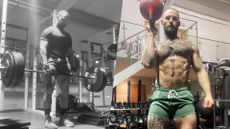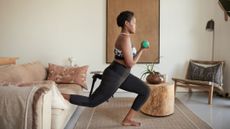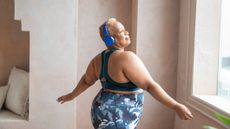I have a confession to make: I have mild scoliosis, and I am almost constantly in some level of pain. My scoliosis affects my general well-being, especially sleep, but I learned to manage the condition relatively well since I've been living with it for more than 30 years. Most importantly, I use these bodyweight exercises to ease back pain when my back situation takes a turn for the worse.
Despite having access to a myriad of home gym equipment, I found the best way to manage back pain is to do bodyweight exercises. Not only these are always accessible no matter where I am, but using my body as resistance allows me to tweak the amount of pressure I apply on specific areas of my back, which is essential in not overexerting the muscles already in pain.
For the record, my scoliosis is most prominent in the thoracic spine area, especially in between the shoulder blades. Some exercises I use focus on this part of my back, but the majority of the blow movements also stretch other areas, such as the lower back and the core as a whole. If you wish to strengthen your core, check out this list of the best core exercises instead.
Scap push-up
This is an exercise I discovered recently after reading Mat Fraser's new book HWPO. The scap push-up is a push-up variation that focuses on moving the shoulder blades around as well as strengthening the core.
Unlike the standard push-up, the scap push-up isolates the shoulder blades and focuses on the area that bothers me the most: the thoracic spine. Scap push-ups are also great to build foundational strength if you can't do push-ups.
Do you experience wrist pain during push-ups? Try using parallattes.
Scap pull-up
Similarly to scap push-ups, scap pull-ups have a limited range of movement and concentrate on shoulder movement. Similarly to scap push-ups, practising scap pull-ups is a great way to increase grip strength, essential for standard pull-ups.
To do a scap pull-up, grip the pull-up bar and hang still using your upper back muscles. From here, you want to squeeze the shoulder blades together to lift yourself just a little bit, then descend back down to the starting position.
The movement is only a couple of inches, and it's important not to bend the elbows; you want to isolate the shoulders for this exercise.
Cat-cow stretch
The cat-cow yoga pose is well-known and an excellent exercise to mobilise the spine. It's perfect for people with scoliosis as the cow pose helps 'unbend' the spine. I tend to move my shoulders up and down asymmetrically in both the cat and the cow pose to stretch the muscles around the spine even more.
Foam roller
I can't recommend foam rollers enough; they are an excellent tool to ease back pain. A standard foam roller is not only cheap as chips, but it can effectively help ease back and leg pain. I roll almost every day and like to move my arms around as I do so to attack the muscles and ligaments from different angles.
For example, by reaching up with both arms as I roll my upper back, I can open up the shoulder blades and access muscles under this area with the foam roller, which is a real boon. I sometimes use a massage ball on a wall to target specific areas on my back.
Superman
The superman exercise targets an area often neglected by other movements, namely the lower back. At the same time, it also stretches the abdominal area and flexes the muscles around the spine. You might need a yoga mat for this exercise, especially if you work out on hard floor.
Dumb waiter
The dumb waiter is a brilliant exercise. Not only does it open up the chest, but it also strengthens the muscles around the back of the shoulders, which may improve posture. It's simple yet effective; no reason why you shouldn't try it today to improve posture.
Wall angels
Finally, another easy exercise that works wonders on the upper back. Wall angles move the shoulders around and strengthen the muscles in this area. They can also help improve shoulder mobility, an often neglected area in fitness.













